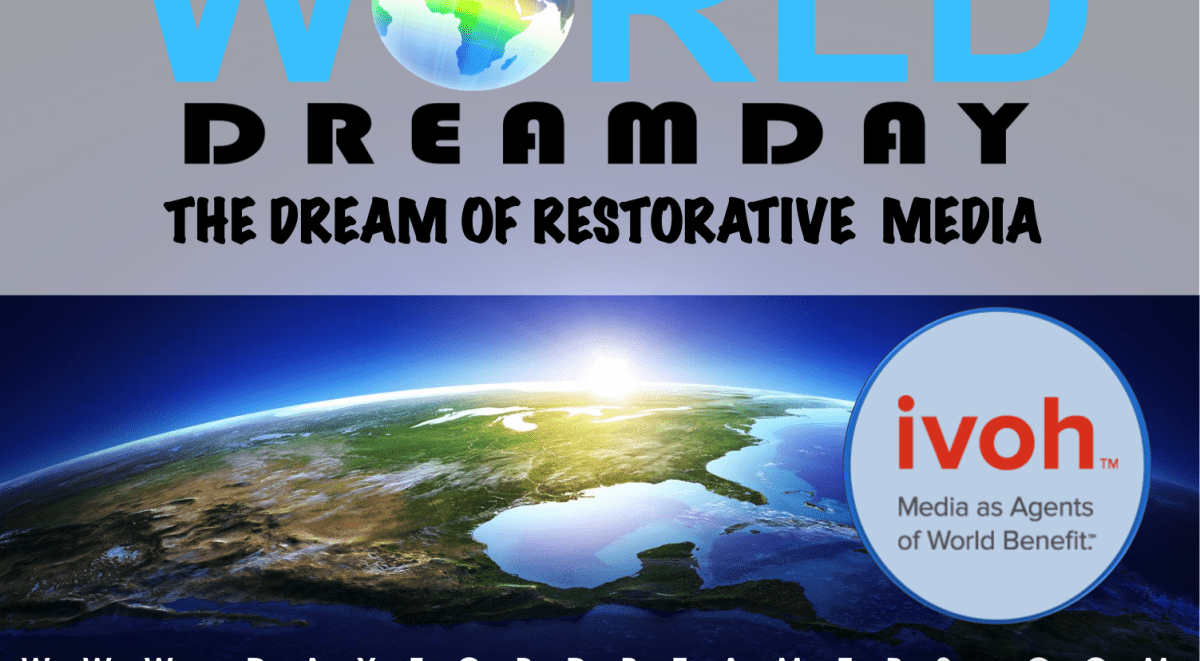
What if the news media covered stories of recovery and resilience as much as they cover stories about devastation and despair?
This has been a driving question behind our work at Images & Voices of Hope (ivoh), a nonprofit that strengthens the media’s role as an agent of change and world benefit.
At ivoh, we’ve coined the term “Restorative Narrative” to describe a genre of stories that show how people and communities are learning to rebuild and recover after experiencing difficult times. While these narratives are often about restoration after a tragedy, they can also focus on restoration in the midst of chronic situations — such as Detroit’s bankruptcy, poverty in a city, etc.
These narratives move away from the traditional “if it bleeds, it leads” mentality and shift the focus of stories from “what happened” to “what’s possible.” They express empowerment, revitalization, and resilience.
We believe these narratives have the power to change people, communities – and ultimately society – for the better. Specifically, we believe Restorative Narratives can influence and mobilize people in ways that traditional news stories haven’t.
Narratives like these:
How one man turned to photography and art as a healing, coping mechanism and How Capital Public Radio fosters meaningful community conversations By Allison Griner
On 14th anniversary of Sept. 11 attacks, a reflection on images of hope & despair By Roy Peter Clark
and conferences that explore them like the one being held at Florida State University on ‘Storytelling to Change the World’: A conversation on how media can transform communities
Research supports the notion that there’s a need for these narratives. A new study conducted by NPR, the Robert Wood Johnson Foundation, and Harvard School of Public Health found that one in four people say they experienced a “great deal” of stress over the past month. Consuming news, they said, was one of the biggest contributors to their day-to-day stress.
When people are overwhelmed, anxious, or stressed, they often feel paralyzed. News coverage of disruption and breakdown, then, may actually interfere with a community’s or a person’s ability to respond to crisis in creative and effective ways.
Our belief is that Restorative Narratives can provide crucial information about a tragedy and help people identify meaningful pathways forward. The potential impact of these narratives is significant, especially as it relates to positive psychology.
Positive psychologist Barbara Frederickson has found that witnessing and hearing about positive emotions such as kindness, generosity, compassion, gratitude, etc., can “broaden the scopes of attention, cognition and action and build physical, intellectual and social resources — enduring personal resources, which function as reserves to be drawn on later to manage future threats.” In other words, people who experience positive emotions are more likely to form connections with people and play a more active role in their community.
In 2011, a University of Pennsylvania study looked at the intersection of positive psychology and journalism and found that “positive” stories make people feel more energetic and engaged. By contrast, “negative” stories make people feel hopeless and passive.
While Restorative Narratives often stem from tragedy, they’re “positive” in the sense that they illuminate resilience and recovery. Our hope is that by broadening storytellers’ focus beyond “what happened” to include “what’s possible,” Restorative Narratives can compel people to become more engaged in their community and act in ways that benefit society. This type of engagement is especially important in the aftermath of tragedy.
On a similar level, we believe Restorative Narratives can teach resilience, which is an acquired skill. By telling stories about how a particular community has learned to become resilient, the media can help other communities learn what it means to be resilient.
Not every story about a tragedy can or should be turned into a Restorative Narrative. But many can, and are often left untold.
We’d like to imagine a world in which Restorative Narratives are a critical component of media coverage. This dream of ours, once accomplished, would lead to positive change for both media practitioners and news consumers.
This dream isn’t as farfetched as it may seem. The media industry has changed dramatically in recent years, and with that change comes new opportunities to tell stories in new ways. In the past year, there’s been a growing interest in stories related to solutions, (as opposed to those that focus only on problems) and resilience (as opposed to those that focus only on tragedy).
By shifting the traditional journalistic focus from devastation and despair to resilience and recovery, we can create a world where people are mobilized by the news, rather than paralyzed by it – a world where people are brought together by the power of narrative.
As Nigerian poet Ben Okri once said: “Stories are the secret reservoir of values: change the stories that individuals and nations live by and tell themselves and you change the individuals and nations themselves.”
Narratives have the power to create much-needed awareness and change. By giving media practitioners the means to tell more Restorative Narratives, we hope to contribute to this meaningful change, one story at a time.
Mallary Jean Tenore is managing director of ivoh. She can be reached at [email protected].
